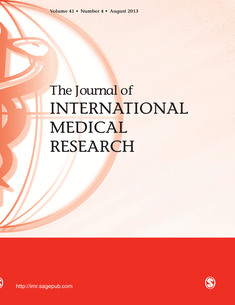
Zoledronic acid increases BMD and prevents fracture risks in women with osteoporosis

Zoledronic acid increases BMD and prevents fracture risks in women with osteoporosis
Randomized controlled trial of zoledronic acid for treatment of osteoporosis in women
J Int Med Res. 2013 Jun;41(3):697-704. doi: 10.1177/0300060513480917. Epub 2013 May 13Synopsis
483 Chinese women with osteoporosis were randomized to receive one 5mg zoledronic acid (ZOL) intravenous infusion per year or a placebo. This two year study aimed to evaluate the effect of ZOL on fracture risk and bone mineral density. The results demonstrated increased bone mineral density in the total hip, femoral neck and trochanter with ZOL treatment. The overall risk of fracture was significantly reduced, compared to the placebo.
Was the allocation sequence adequately generated?
Was allocation adequately concealed?
Blinding Treatment Providers: Was knowledge of the allocated interventions adequately prevented?
Blinding Outcome Assessors: Was knowledge of the allocated interventions adequately prevented?
Blinding Patients: Was knowledge of the allocated interventions adequately prevented?
Was loss to follow-up (missing outcome data) infrequent?
Are reports of the study free of suggestion of selective outcome reporting?
Were outcomes objective, patient-important and assessed in a manner to limit bias (ie. duplicate assessors, Independent assessors)?
Was the sample size sufficiently large to assure a balance of prognosis and sufficiently large number of outcome events?
Was investigator expertise/experience with both treatment and control techniques likely the same (ie.were criteria for surgeon participation/expertise provided)?
Yes = 1
Uncertain = 0.5
Not Relevant = 0
No = 0
The Reporting Criteria Assessment evaluates the transparency with which authors report the methodological and trial characteristics of the trial within the publication. The assessment is divided into five categories which are presented below.
1/4
Randomization
3/4
Outcome Measurements
4/4
Inclusion / Exclusion
4/4
Therapy Description
3/4
Statistics
Detsky AS, Naylor CD, O'Rourke K, McGeer AJ, L'Abbé KA. J Clin Epidemiol. 1992;45:255-65
The Fragility Index is a tool that aids in the interpretation of significant findings, providing a measure of strength for a result. The Fragility Index represents the number of consecutive events that need to be added to a dichotomous outcome to make the finding no longer significant. A small number represents a weaker finding and a large number represents a stronger finding.
Why was this study needed now?
Osteoporosis occurs in over 55% of the population over the age of 50 years. It compromises individual’s bone mineral density and exposes him or her to a higher risk of fractures. These fractures in the elderly can lead to increased morbidity, mortality and healthcare costs. Zoledronic acid, an aminobisphosphate, has shown positive effects on bone mineral density. This study was conducted to see if similar effects were present in mainland Chinese women.
What was the principal research question?
What is the effect of zoledronic acid (ZOL) on bone mineral density (BMD) and fracture risk at the L1-L4 vertebrae, femoral neck, hip and trochanter in Chinese women with osteoporosis, measured over 2 years?
What were the important findings?
- ZOL decreased fracture incidence at L1-L4 vertebrae, femoral neck, hip, and trochanter. However, a significant fracture risk decrease was only seen in the trochanter (p<0.05) and in overall fracture risk (46% difference, odds ratio 0.54, 95% CI 0.29 to 0.98).
- ZOL had greater BMD at all regions (L1-L4 vertebrae, total hip, femoral neck and trochanter) at all-time points (p<0.05).
- Serious adverse events and deaths were comparable between the two groups (3.3% in the ZOL group vs. 3.7 % in the placebo group). 6 patients (2.5%) in the ZOL group and 8 patients (3.3%) in placebo group experienced serious cardiac symptoms.
- First dose acute-phase reactions, such as headaches, chills, pyrexia, myalgia, arthralgia and influenza-like syndromes were similar between two groups (27.7% in the ZOL group and 25.3% in the placebo group).
- ZOL and placebo groups did not differ in serious incidences of atrial fibrillation, cardiac arrhythmia, and renal dysfunction.
What should I remember most?
Annual infusions of 5mg Zoledronic acid safely increased bone mineral density in L1-L4 vertebrae, total hip, femoral neck, and trochanter. They also lowered trochanter and overall fracture risks at 2 years in Chinese women suffering from osteoporosis.
How will this affect the care of my patients?
The study recommends annual infusions of Zoledronic acid in treatment of women with osteoporosis. More blinded trials can further validate these findings.
Learn about our AI Driven
High Impact Search Feature
Our AI driven High Impact metric calculates the impact an article will have by considering both the publishing journal and the content of the article itself. Built using the latest advances in natural language processing, OE High Impact predicts an article’s future number of citations better than impact factor alone.
Continue



 LOGIN
LOGIN

Join the Conversation
Please Login or Join to leave comments.